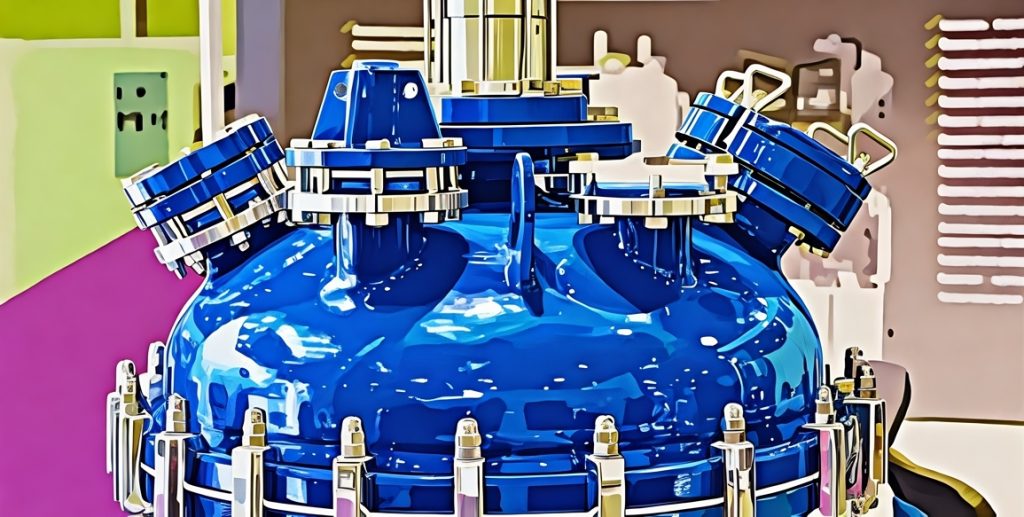In the quest for sustainable and reliable energy solutions, Small Modular Reactors (SMRs) have emerged as a transformative innovation. These compact nuclear reactors represent a flexible and efficient alternative to traditional large-scale nuclear power plants. With their smaller size, modular design, and enhanced safety features, SMRs are becoming a cornerstone of energy strategies aimed at addressing growing power demands and meeting ambitious climate goals. In recent years, major technology companies have begun to invest heavily in SMRs, underscoring their potential to revolutionize energy generation and support the transition to a low-carbon future.
The Unique Design and Versatility of SMRs
SMRs are nuclear reactors designed to generate up to 300 megawatts of electricity, about a third of the output of traditional nuclear reactors. Unlike conventional plants, which require complex and costly on-site construction, SMRs are fabricated in factories and transported to their deployment locations. This modularity reduces construction times and costs while enhancing scalability. The smaller physical footprint and inherent flexibility of SMRs make them ideal for diverse applications, from powering remote communities and industrial sites to serving as a reliable complement to intermittent renewable energy sources. The International Atomic Energy Agency (IAEA) has highlighted their versatility, noting their potential to provide flexible power solutions to meet the evolving needs of users worldwide.
Technology Companies Leading the Way
Leading technology companies have recognized the promise of SMRs and are investing in their development as part of broader strategies to secure reliable energy supplies and achieve sustainability objectives. Amazon Web Services (AWS), for instance, has committed over $500 million to X-energy, a company specializing in advanced nuclear reactor and fuel technologies. This partnership aims to develop over five gigawatts of new nuclear energy projects in the United States by 2039, with initial reactor sites planned in Washington and Virginia. The collaboration reflects AWS’s commitment to integrating carbon-free energy sources into its operations to support its massive data centers and cloud computing infrastructure.
Similarly, Google has entered into an agreement with Kairos Power to purchase energy from multiple SMRs. This partnership aims to bring the first operational reactor online by 2030, with further deployments expected through 2035. By incorporating SMR-generated electricity into its energy portfolio, Google is advancing its goal of powering its global operations with carbon-free energy. This initiative aligns with the company’s broader commitment to reducing its environmental footprint and addressing the growing energy demands associated with artificial intelligence and other energy-intensive technologies.
The Appeal of Small Modular Reactors
The appeal of SMRs lies in their unique combination of scalability, sustainability, and security. Their modular nature allows for incremental capacity additions, enabling companies to align energy production with their evolving needs. The low-carbon electricity produced by SMRs is instrumental in helping companies meet climate targets while reducing dependence on fossil fuels. Advanced safety features, including passive safety systems and lower operating pressures, further enhance their reliability, addressing long-standing concerns about nuclear energy. Additionally, investing in SMRs offers companies a measure of energy independence, insulating them from the volatility of global energy markets and supply disruptions.
Overcoming Barriers to Deployment
However, the path to widespread deployment of SMRs is not without challenges. Regulatory hurdles remain a significant barrier, as obtaining approvals from nuclear regulatory bodies can be a complex and time-consuming process. Public perception is another critical factor; concerns about nuclear safety and waste management persist, requiring transparent communication and active engagement with communities to build trust and address misconceptions. Economic viability is also a consideration, as the initial capital costs of developing SMRs, while lower than those of traditional reactors, are still substantial. Overcoming these obstacles will require coordinated efforts among industry stakeholders, policymakers, and the public to create a supportive environment for SMR innovation.
A Promising Future for SMRs
Despite these challenges, the future of SMRs looks promising. The integration of these reactors into the energy portfolios of leading technology companies marks a pivotal moment in the evolution of nuclear energy. As SMRs transition from concept to reality, their potential to transform energy generation and distribution becomes increasingly clear. The next decade will be critical in demonstrating the scalability, reliability, and economic feasibility of SMRs, with the success of initial deployments serving as a blueprint for broader adoption.
Conclusion: Innovation Driving Sustainability
The advancements in SMRs are emblematic of a larger shift in how societies think about energy. As the global demand for electricity continues to grow, driven by urbanization, industrialization, and the rapid expansion of digital technologies, innovative solutions like SMRs are becoming indispensable. The combination of private sector investment, technological innovation, and public policy support is positioning SMRs as a key component of the energy systems of the future.
In conclusion, the emergence of Small Modular Reactors as a viable energy solution is a testament to the power of innovation in addressing complex global challenges. By embracing SMRs, technology companies are not only securing their own energy needs but also contributing to the broader goal of reducing carbon emissions and combating climate change. The investments being made today will lay the foundation for a sustainable and reliable energy landscape, demonstrating that advanced nuclear technologies can play a critical role in achieving a balanced and resilient energy future.

